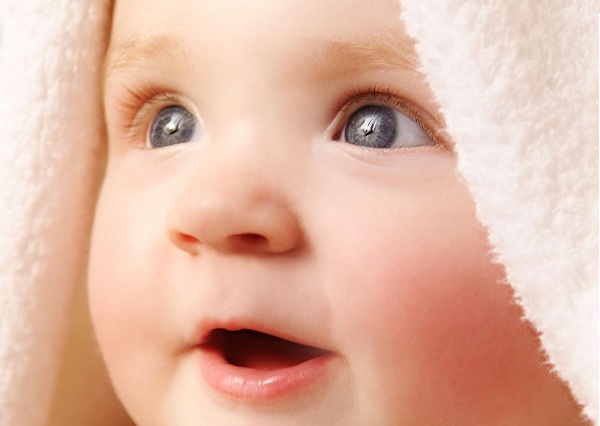
African-American, Hispanic and Asian babies are usually born with dark brown that stay dark their whole lives. It is a different story with Caucasian babies.
Many people notice, when looking back through old baby photos, that their now-deep brown eyes were once a much lighter shade of blue. A startling transformation, but in fact, most newborns have blue eyes. But how can most newborns have blue eyes – when brown eyes are the most common eye colour in adults?
Most of us learnt the basics of genetics at school – and that the colour of our eyes is determined by what genes we inherit from our parents. The strongest, and most dominant eye colour is brown, and the weakest is blue. However your genes aren’t the only thing which have an impact on the colour of your eye, there is another factor – melanin.
What Is Melanin?
We are all born with a unique level of melanin in our genetic makeup, and this is what determines our hair, eye and skin colour. People that have lots of melanin are commonly dark haired, dark eyed with olive skin, and people with less melanin have lighter coloured skin, hair and eyes.
The level of melanin you have will ultimately help to determine the colour of your eyes. The higher the concentration of melanin in the iris, the darker the eye colour. People with blue eyes have very low levels of melanin in the iris. Albino is a condition where a person doesn’t have any melanin at all and they have very pale skin and white-blonde hair. Their irises (the coloured part of the eye) often seem pink in colour – this is because the blood vessels at the back of their eye reflect light.
How Does It Work?
Melanin production is triggered by sunlight, and this is why skin can be bronzed by lying beneath strong sun rays. The same colouring process occurs in your eyes.
When you’re born, your irises have never been exposed to sunlight so appear light, as a blue or grey colour. It is possible for a baby’s eyes to change colour many times in the first year of their life – from blue, to hazel to brown. This is a reflection of the increasing level of melanin triggered in their eyes as they are exposed to more and more sunlight.
The most dramatic changes are normally seen between the ages of 6 and 9 months. However some adults report that their eye colour continues to subtly change throughout their entire life.
While all Caucasians are born blue eyed, not everyone follows the same pattern to develop brown eyes in later life. This is because of a genetic mutation between 6 and 10 thousand years ago, that caused the gene that allows melanin production in the iris to be ‘switched off’. So even though their eyes are exposed to sunlight, the colour of the iris doesn’t change.
Research into eye colour genetics is extremely complex and there are many things yet to explain – such as how some people are born with two eyes of different colours.
[box_light]Steph McLean is passionate about science and is a regular blogger about topics on biology and genetics. She contributes this article on behalf of Lenstore, an online retailer of contact lenses. [/box_light]
Related articles
- Eye Colour Genetics: A Window Into The Soul (bioclaire13.blogspot.com)
- Eye Color Explained (cntnews.wordpress.com)
- Channel the celebs and accessorise your eyes with coloured contact lenses! (myfashionlife.com)

Balanced Diet Beauty Calories Cancer Diet Diet Plan Eating Effective Weight Loss Exercise feat featured fitness Food Fresh Fruits Fresh Fruits And Vegetables Fruits And Vegetables Fruits Vegetables Hcg Weight Loss Health Health Experts Losing Weight Lt Massage Mental health Muscle Natural Diet Nbsp Nutrition Person To Person Physical exercise Physical fitness Pregnancy Pregnant Women Skin Sleep spot Stress Time Period Tooth Weight Loss Weight Loss Diet Weight Loss Products Weight Loss Program Weight Reduction Weight training
Trending Posts
-
 Top 5 Dangerous Ants That Deliver Fatal Bites
Top 5 Dangerous Ants That Deliver Fatal Bites
-
 Famous Celebrity Moles
Famous Celebrity Moles
-
 How To Properly Provide In-Home Care To An Elderly Person
How To Properly Provide In-Home Care To An Elderly Person
-
 Workout without the Gym: 6 Awesomely Simple Ways to Cardio Your Way to Fitness!
Workout without the Gym: 6 Awesomely Simple Ways to Cardio Your Way to Fitness!
-
 Facts About Rheumatoid Arthritis
Facts About Rheumatoid Arthritis
-
 Are You Looking For A Novel, Exciting Way To Lose Weight Get Into Boxing!
Are You Looking For A Novel, Exciting Way To Lose Weight Get Into Boxing!


Leave a Reply